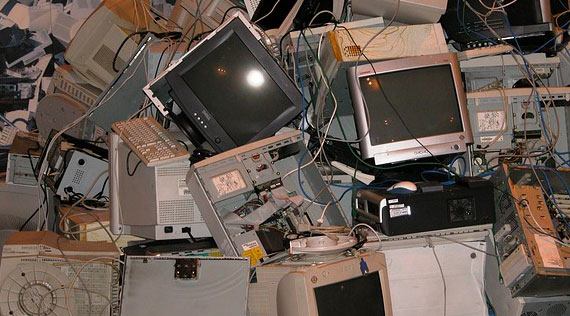
SEATTLE (Waste Advantage): The research-driven approach of design duo Studio Formafantasma might typically result in beautiful, poetic objects ranging from lighting and vessels to furniture, but the studio has been recently applying its efforts towards tackling a very contemporary problem: the recycling of electronic waste.
“In this moment, electronic waste is the fastest stream of waste growing globally. Only 30% is being correctly recycled while the remaining 70% is being exported to developing countries or simply ends up in the landfill,” said studio co-founder Simone Farresin on Wednesday at the Fortune and Wallpaper* Brainstorm Design conference in Singapore. “The obvious question here is why.”
While it may seem like stating the obvious, the recycling of electronic products is actually highly complex. Not only is the issue worsening thanks to the increasing number of circuit boards present in electronic products, but the fact that most copper and metal elements are covered in black rubber for safety also means that they are harder to detect by recycling systems that use imaging to identify and isolate various components by color.
Studio Formafantasma has drilled down into the problem by collaborating with experts in Europe, India and Kenya to conduct extensive research through analysis of different levels of the recycling chain. Their design-led process included speaking with legislators, activists (who use GPS to track electronic waste), recyclers, non-governmental agencies (which support responsible recycling workshops), and manufacturers.
“Design can be used to mediate conversation,” Farresin said. “One of the problems we had while speaking to recyclers was the need to gain the information from them to actually design. What we did was dismantle electronic products which we placed, almost as a taxonomy, into different elements so that we could speak with them about the problematics in recycling very specifically.”
One of Studio Formafantasma’s solutions includes the implementation of a color-coding system that identifies recyclable metal elements and helps separate them from hazardous components. When an electronic device is opened, there is currently no universal design language to indicate which materials are harmful or not.
Courtesy: https://wasteadvantage.com
| Copper Scrap View All | |
| Alternator | 0.32 (0.01) |
| #1 Copper Bare Bright | 3.77 (0.07) |
| Aluminum Scrap View All | |
| 356 Aluminum Wheels (Clean) | 0.73 (0.02) |
| 6061 Extrusions | 0.64 (0.02) |
| Steel Scrap View All | |
| #1 Bundle | 475.00 (0) |
| #1 Busheling | 495.00 (0) |
| Electronics Scrap View All | |